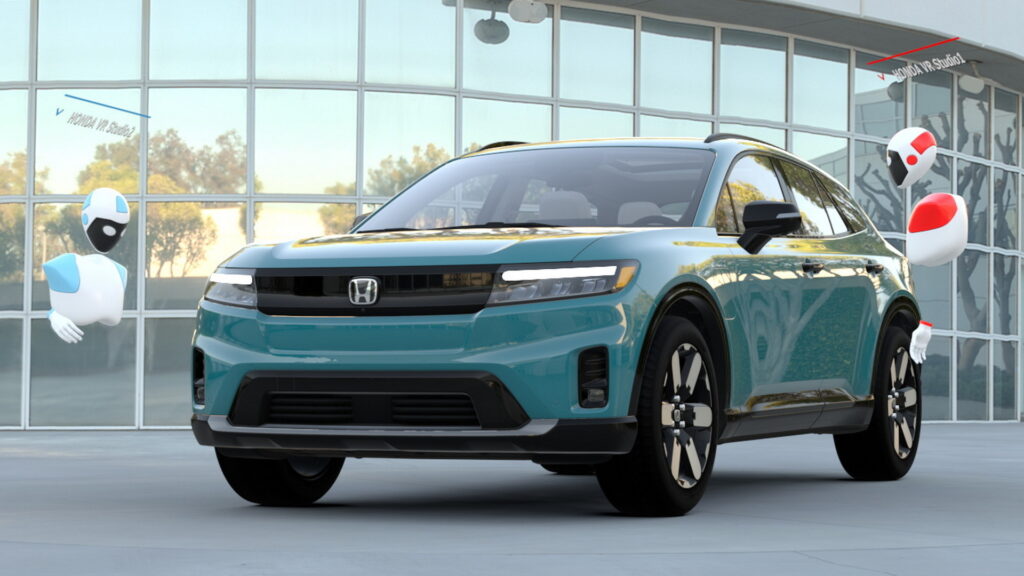Although the COVID-19 pandemic had a massive impact on the automotive industry, it wasn’t all bad. Honda says that it now has more tools than ever to help it speed the design and development process, chief among which is virtual reality.
First implemented as a strict necessity, Honda’s global design teams started using VR headsets to evaluate each other’s work, and it was the team at the Honda Design Studio in Los Angeles, that pioneered the use of VR to help with the development of the all-electric Prologue. The technology allowed colleagues from around the world to confer with one another when they couldn’t see clay models or bucks.
“Incorporating virtual and augmented reality in the design process allowed our Honda engineers and designers to merge digital content and physical assets in a cohesive way to interact with what they’re experiencing and touching in an immersive environment,” said Mathieu Geslin, VR technology leader, Honda Design studio. “Honda Prologue was key to fully using VR in a data-led design process, with clay modeling as the verification tool, something we will carry forward into the development of other Honda products.”
Read: Honda’s Upcoming EVs Could Cost Thousands Less Than Rivals Thanks To GM Connection
Honda says that the design process will never go entirely virtual because it believes that touch and physicality are such important parts of the work. Virtual reality has proven to be a powerful tool for designers, though.
“We don’t want to lose emotion and the human touch to Honda design, so we won’t pursue a purely digital approach, but we are really excited about the Honda products that will be coming to customers in the future by leveraging VR technology,” said Geslin. “It’s an ongoing effort to further explore the technical capabilities of VR and AR in our development centers worldwide for cross-collaboration that will further enhance the appeal and quality of our products.”
Virtual reality is an especially useful tool in vehicle interiors, says Honda. There, the ability to quickly cycle through color choices, and material applications, as well as faster collaboration have sped up the design process tremendously.
“Virtual reality prototyping removed limitations to the interior design and allowed us to address feedback quicker and collaborate more cohesively with the HMI and color, materials and finishes design teams,” said Lisa Lee, interior design project lead.
For the Prologue, the tool was also useful for selecting colors, which could be viewed in a variety of virtual environments, which have a big impact on the warmth, depth, and perception of a hue. Used as a validation tool, VR helped the Honda design team and will continue to be used going forward.






